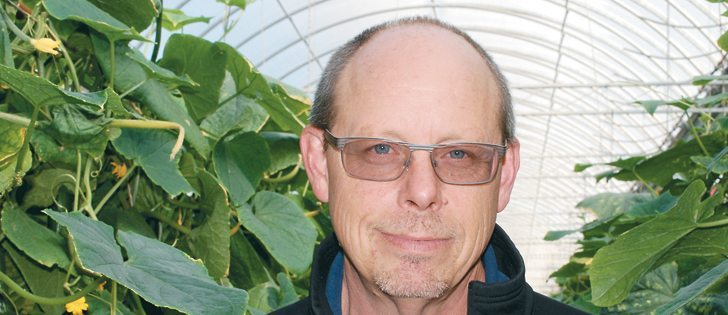KINGSVILLE, Ont. — The United States is emerging as a new competitor in greenhouse vegetable production, thanks partly to the Ontario growers who are locating there.
“They have access to cheaper infrastructure and lower regulatory costs,” said Jamie Cornies, vice-president of the Ontario Greenhouse Vegetable Growers.
“I’m not sure on wages, but I’m guessing it’s pretty close to being the same.”
Cornies said he’s heard that Ontario-based growers have invested in operations in Ohio, Virginia, Michigan and Pennsylvania. There’s also been considerable competition from Mexico and overseas, especially Spain.
Read Also

Farming Smarter receives financial boost from Alberta government for potato research
Farming Smarter near Lethbridge got a boost to its research equipment, thanks to the Alberta government’s increase in funding for research associations.
“Ontario advertises that they’re open for business, but I don’t really think they’re showing it,” he said.
Approximately 2,500 acres of tomatoes, cucumbers and peppers are under greenhouse production in Ontario. Most is located in Essex County in the Lamington-Kingsville area, making it the largest concentration of conventional greenhouse space in North America.
Unfortunately, there are obstacles to further expansion.
A lack of infrastructure at Cornies’ location just outside Kingsville near Lake Erie’s north shore means the supply of natural gas is not guaranteed.
He has installed a biomass system that allows him to burn oat-hull pellets when the demand for natural gas is high.
Other producers have used wood, and one family in the region invested in miscanthus, an exotic perennial grass species that can be established in a couple years.
The electricity distribution network also needs improvements to enable further expansion and allow growers to invest in LED lighting to enhance production during low-light months.
Labour also presents challenges and a major cost to growers. Cornies’ workers are 20 full-time Canadians and 20 seasonal workers from Mexico hired through the Seasonal Agricultural Workers Program.
The federal government’s focus on ensuring Canadians have first crack at jobs has created more paperwork. Cornies agreed with the motivation — putting Canadians to work — but said it hasn’t made much of a difference.
He said only one of 10 Canadians hired stays with his company for a year or more.
“There are a lot more hurdles,” he said. “We have to be continually advertising to hire Canadians and interviewing Canadians for jobs, but it hasn’t made any difference, at least not on this farm.”
Cornies said his Canadian em-ployees focus primarily on packing cucumbers. He doesn’t have a benefits package, but there’s a graduated pay scale and a profit-sharing arrangement.
The Mexicans receive Ontario’s minimum wage of $11.25 per hour and have the toughest job: harvesting cucumbers by hand.
However, SAWP workers are more expensive for employers because of extra costs related to housing, transportation and administration.
Rick Seguin, general manager of Ontario Greenhouse Vegetable Growers, said 70 percent of production is sold in the United States. There are also exports to China, but these are still exploratory and do not amount to much volume.
The exchange rate is working for growers, but demand has been an issue for cucumbers. Cornies grows both the long seedless and mini cucumber types at his mid-sized, 17-acre operation.

















